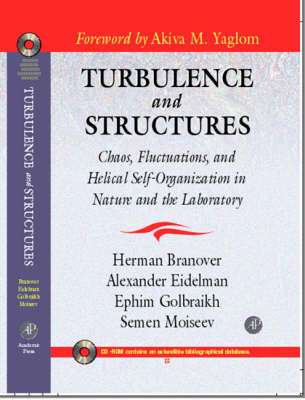International Geophysics
1 total work
Turbulence is one of the most wide-spread phenomena in the universe. It relates to processes within the atmosphere, ocean, deep within the earth, as well as to the stars. The general public usually knows about turbulence from the unpleasant shaking of an airplane, or from disastrous atmospheric phenomena such as typhoons and hurricanes. The chaotic and unpredictable behavior of turbulent movement makes it very difficult to study. The degree of understanding of turbulence is still far from being complete. Some progress was made with the recent advent of a new science--chaos theory. The authors succeeded in examining one basic feature of turbulence called helicity (or spirality) which is the foundation of explaining and predicting the generation of large turbulent structures (e.g. typhoons). Helicity is a universal feature existing not only in fluid flows but also in solid bodies and even in living organisms. This book can be especially useful for researchers and students in fluid mechanics, plasma, geophysics, biology, and meteorology.
